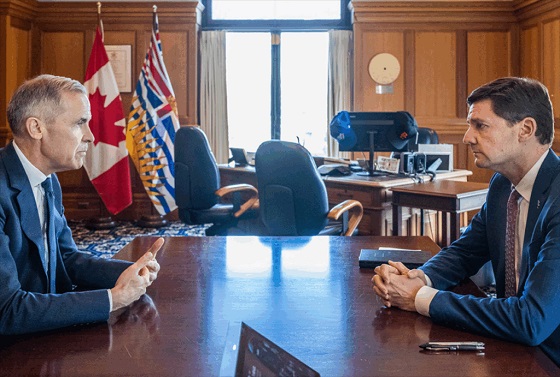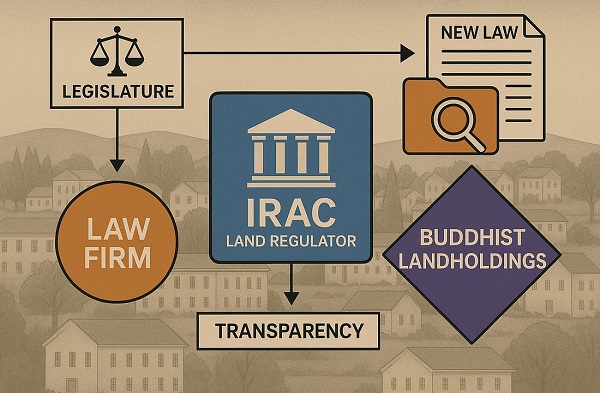Energy
Coal: one million tons an hour

From Resource Works
By Stewart Muir
There is no “energy transition” – It’s all “energy addition”
Politicians and climate campaigners like to talk of an “energy transition” in which the world is going to burn less and less fossil fuel, switch to clean (or cleaner) energy, and thus resolve climate issues.
But so far the “transition” is not so much about moving away from traditional fuels as about adding renewable energy sources on top of them.
Our latest episode of Power Struggle looks at the impact of world use of coal, which is still a prime source of energy — and growing. That’s bad, we agree, but some uses of coal are going to be hard to change.
Experts have been predicting “peak coal” for years but they’ve always been wrong. This year, global coal consumption is expected to reach an all-time high.
Some key points from our podcast with our Stewart Muir:
- The world burns over one million tons of coal every hour. That’s the weight of nearly 5,000 Statues of Liberty or 10 aircraft carriers, or about 247,000 adult African elephants. So make that 37,000 adult African elephants every hour.
- Coal energy has enabled millions of people in developing countries to better their lives, and their nations’ economies.
- India’s coal consumption went up 10% in 2024. And Vietnam, the Philippines, Indonesia and Pakistan are increasingly reliant on coal.
- China may have installed more renewable-energy sources, and may lead in electric vehicles, but China’s green-energy business is built on coal.
So, while we hail the energy transition, and applaud solar energy, carbon capture and more, we still need to talk about the 247,000 elephants in the world’s room — coal.
Clearly, without addressing coal’s persistent use, the energy transition will fail.
Catch this latest (13th) episode of Power Struggle on YouTube here: https://ow.ly/WiSw50UzX9F
And watch our previous episodes here: https://ow.ly/XK9350UzX9R
Energy
It should not take a crisis for Canada to develop the resources that make people and communities thrive.

From Resource Works
Canada is suddenly sprinting to build things it slow-walked for a decade.
“Canada has always been a nation of builders, from the St. Lawrence Seaway to Expo 67. At this hinge moment in our history, Canada must draw on this legacy and act decisively to transform our economy from reliance to resilience. We are moving at a speed not seen in generations,” announced Prime Minister Mark Carney at the end of August.
He was echoed by British Columbia Premier David Eby shortly after.
“There’s never been a more critical time to diversify our economy and reduce reliance on the U.S., and B.C. is leading the way in Canada, with clean electricity, skilled workers and strong partnerships with First Nations,” the premier stated after his government approved the Ksi Lisims LNG project, led by the Nisga’a nation.
In the face of President Donald Trump’s tariffs, Ottawa has unveiled a first wave of “national projects” that includes an expansion of LNG Canada to 28 million tonnes a year, a small modular reactor at Darlington, two mines, and a port expansion, all pitched as a way to “turbocharge” growth and reduce exposure to a trade war with the United States.
The list notably excludes new oil pipelines, and arrives with rhetoric about urgency and nation-building that begs a simple question: why did it take a crisis to prioritize what should have been routine economic housekeeping?
The most tangible impact of resource projects can be observed in the impact it has on communities. The Haisla Nation is enjoying an economic renaissance with their involvement in the LNG Canada project on their traditional lands, which became operational in June.
Furthermore, the Haisla are set to unveil their own facility, Cedar LNG, in 2028. Already, the impact of employment and strong paycheques in the community is transforming, as former Haisla Chief Councillor Crystal Smith as attested many times.

Former Haisla Chief Councillor Crystal Smith.
“Let’s build a bright and prosperous future for every Canadian and every Indigenous person that wants to be involved, because change never happens inside of our comfort zones, or the defensive zone,” said Crystal Smith at a speech delivered to the 2025 Testimonial Dinner Award on April 24 in Toronto.
Fortunately, the new pro-resource posture has a legislative backbone. Parliament passed the One Canadian Economy Act to streamline approvals for projects deemed in the national interest, a centrepiece of the government’s plan to cut internal trade barriers and fast-track strategic infrastructure.
Supporters see it as necessary in a period of economic rupture, while critics warn it risks sidelining Indigenous voices in the name of speed. Either way, it is an admission that Canada’s previous processes had become self-defeatingly slow.
British Columbia offers a clear case study. Premier David Eby is now leaning hard into liquefied natural gas. His government and Ottawa both approved the Nisga’a Nation-backed Ksi Lisims LNG project under a “one project, one review” approach, with Eby openly counting on the Nisga’a to build support among neighbouring nations that withheld consent.
It is a marked turn from earlier NDP caution, framed by the premier as a race against an American Alaska LNG push that could capture the same Asian markets.
Yet the pivot only underscores how much time was lost. For years, resource projects faced overlapping provincial and federal hurdles, from the Impact Assessment Act’s expanded federal reach to the 2018 federal tanker ban on B.C.’s north coast.
Within B.C., a thicket of regulations, policy uncertainty, and contested interpretations of consultation obligations chilled investment, while political positions on pipelines hardened. Industry leaders called it “regulatory paralysis.” These were choices, not inevitabilities.
The national “go-fast” stance also arrives with unresolved tensions. Ottawa has installed a Calgary-based office to clear and finance major projects, led by veteran executive Dawn Farrell, and is touting the emissions performance of LNG Canada’s expansion.

Dawn Farrell, head of the Major Projects office in Calgary.
At Resource Works, we wholeheartedly endorsed the move, given the proven ability and success of Dawn Farrell in the resource industry. It must also be acknowledged that the major projects office will only be an office unless it meaningfully makes these projects happen faster.
A decade that saw eighteen B.C. LNG proposals produced one major build, and moving to LNG Canada’s second phase is entangled with power-supply constraints and policy conditions. That slow cadence is how countries fall behind.
If the current urgency becomes a steady habit, Canada can still convert this scramble into lasting capacity. If not, the next shock will find us sprinting again, only further from the finish line.
Resource Works News
Daily Caller
McKinsey outlook for 2025 sharply adjusts prior projections, predicting fossil fuels will dominate well after 2050


From the Daily Caller News Foundation
A new report from McKinsey & Company, the “Global Energy Perspective,” lays bare what many of us – dismissed as “climate deniers” – have been asserting all along: Coal, oil and natural gas will continue to be the dominant sources of global energy well past 2050.
The McKinsey outlook for 2025 sharply adjusts prior projections. Last year, the management consultant’s models had coal demand falling 40% by 2035. Today, McKinsey projects an uptick of 1% over the same period. The dramatic reversal is driven by record commissioning of coal-fired power plants in China, unexpected increases in global electricity use, and the lack of viable alternatives for industries like steel, chemicals and heavy manufacturing.
The report states that the three fossil fuels will still supply up to 55% of global energy in 2050, a forecast that looks low to me. Today’s share for hydrocarbons is about 64%.
Dear Readers:
As a nonprofit, we are dependent on the generosity of our readers.
Please consider making a small donation of any amount here.
Thank you!
In any case, McKinsey’s report confirms what seasoned energy analysts and pragmatic policymakers have long maintained: The energy transition will not be swift, simple, or governed solely by climate targets. In fact, this energy transition will not happen at all without large scale deployment of nuclear, geothermal or other technological innovations that prove practical.
In places such as India, Southeast Asia and sub-Saharan Africa, the top energy priorities are access, affordability and reliability, which together add up to national security. Planners are acutely aware of a trap: Sole reliance on weather-dependent power risks blackouts, industrial disruption, economic decline and civil unrest.
That is why many developing nations are embracing a dual track: continued investment in conventional generation (coal, gas, nuclear) while developing alternative technologies. McKinsey says this in consultancy lingo: “Countries and regions will follow distinct trajectories based on local economic conditions, resource endowment, and the realities facing particular industries.”
In countries like India, Indonesia and Nigeria, the scale of electrification and industrial expansion is enormous. These countries cannot afford to wait decades for perfect solutions. They need “reliable and good enough for now.” That means conventional fuels will be retained.
McKinsey’s analysis also underscores what physics and engineering dictate: Intermittent and weather-dependent sources, such as wind and solar, require vast land areas, backup batteries and generation and power-grid investments, none of which come cheaply nor quickly.
The technologies of wind and solar branded as renewable should instead be called economy killers. They make for expensive and unstable electrical systems that have brought energy-rich nations like Germany to their knees. After spending billions of dollars on unreliable wind turbines and solar panels and demolishing nuclear plants and coal plants, the country is struggling with high prices and economic stagnation.
The Germans now have a word for their self-inflicted crisis: Dunkelflaute. It means “dark doldrums”—a period of cold, sunless, windless days when their “green” grid fails. During a Dunkelflaute in November 2024, fossil fuels were called on to provide 70% of Germany’s electricity.
If “renewables” were truly capable, planners would shut down fossil fuel generation. But that is not the case. While wind and solar are pursued in some places, coal and natural gas remain much sought-after fuels. In the first half of 2025 alone, China commissioned about 21 gigawatts (GW) of new coal-fired capacity, which is more than any other country and the largest increase since 2016.
Further, China has approved construction of 25 GW of new coal plants in the first half of 2025. As of July, China’s mainland has nearly 1,200 coal plants, far outstripping the rest of the world.
McKinsey points to a dramatic surge in electricity demand driven by data centers, which is estimated to be about 17 % annually from 2022 to 2030 in the 38 OECD countries. This kind of growth in electricity use simply cannot be met by wind and solar.
When analysts, journalists and engineers point out these realities, they’re branded as “shills” for the fossil fuel industry. However, it is not public relations to point out the physics and economics that make up the math for meeting the world’s energy needs. Dismissing such facts is to deny that reliable energy remains the bedrock of modern civilization.
The cost of foolish “green” policies is being paid in lost jobs, ruined businesses, disrupted lives and impoverishment that could have been avoided by wiser choices.
For those who have repeated energy realities for years, the vindication is bittersweet. The satisfaction of being right is tempered by the knowledge that many have suffered because reality has been ignored.
Vijay Jayaraj is a Science and Research Associate at the CO2 Coalition, Fairfax, Va. He holds an M.S. in environmental sciences from the University of East Anglia and a postgraduate degree in energy management from Robert Gordon University, both in the U.K., and a bachelor’s in engineering from Anna University, India.
-

 Daily Caller3 hours ago
Daily Caller3 hours agoMcKinsey outlook for 2025 sharply adjusts prior projections, predicting fossil fuels will dominate well after 2050
-

 International4 hours ago
International4 hours agoBBC boss quits amid scandal over edited Trump footage
-

 Agriculture6 hours ago
Agriculture6 hours agoFarmers Take The Hit While Biofuel Companies Cash In
-

 Frontier Centre for Public Policy5 hours ago
Frontier Centre for Public Policy5 hours agoNotwithstanding Clause Is Democracy’s Last Line Of Defence
-

 Business2 hours ago
Business2 hours agoCarney’s Floor-Crossing Campaign. A Media-Staged Bid for Majority Rule That Erodes Democracy While Beijing Hovers
-

 COVID-192 days ago
COVID-192 days agoMajor new studies link COVID shots to kidney disease, respiratory problems
-

 Business2 days ago
Business2 days agoP.E.I. Moves to Open IRAC Files, Forcing Land Regulator to Publish Reports After The Bureau’s Investigation
-

 Energy2 days ago
Energy2 days agoCanada’s oilpatch shows strength amid global oil shakeup







